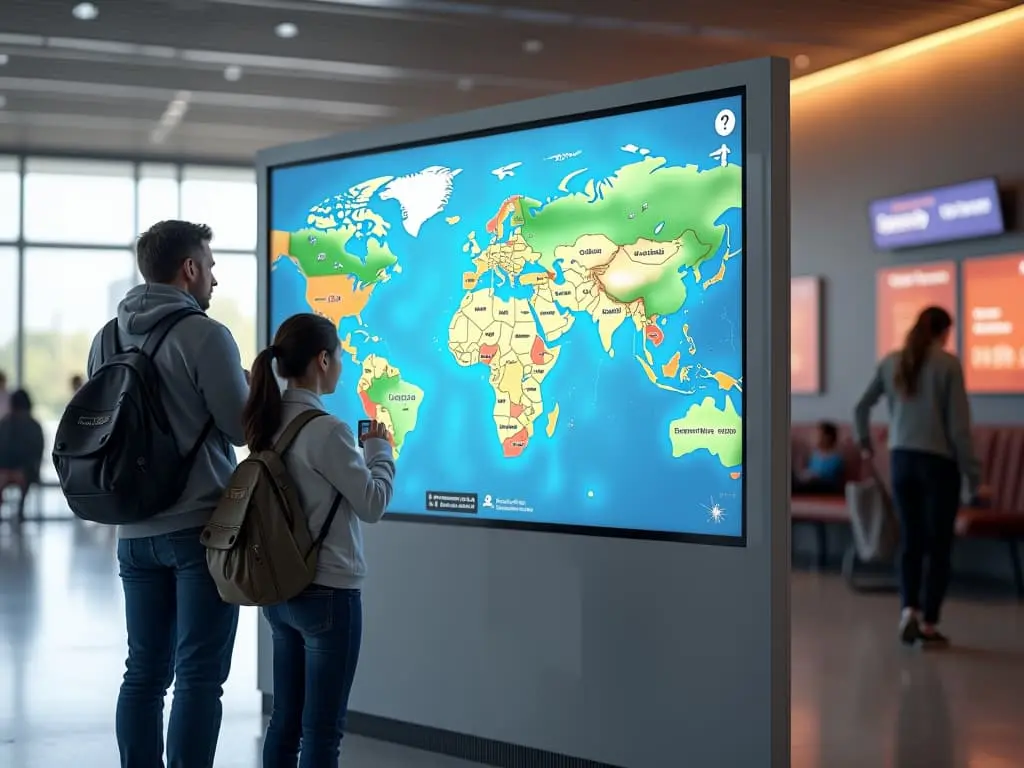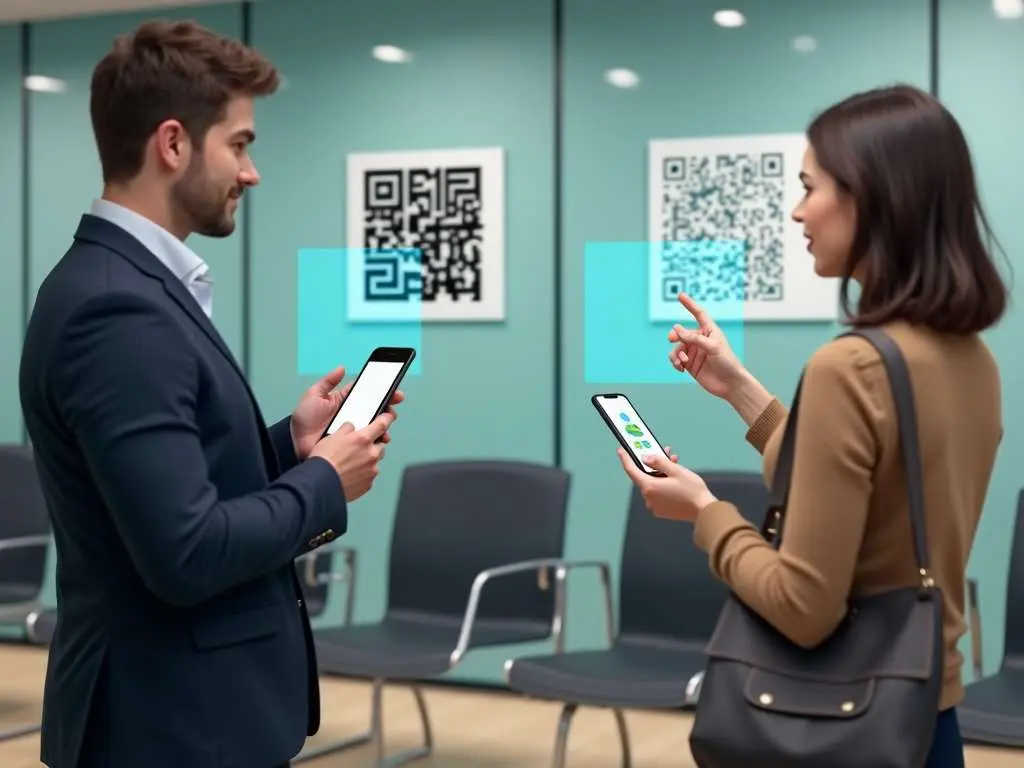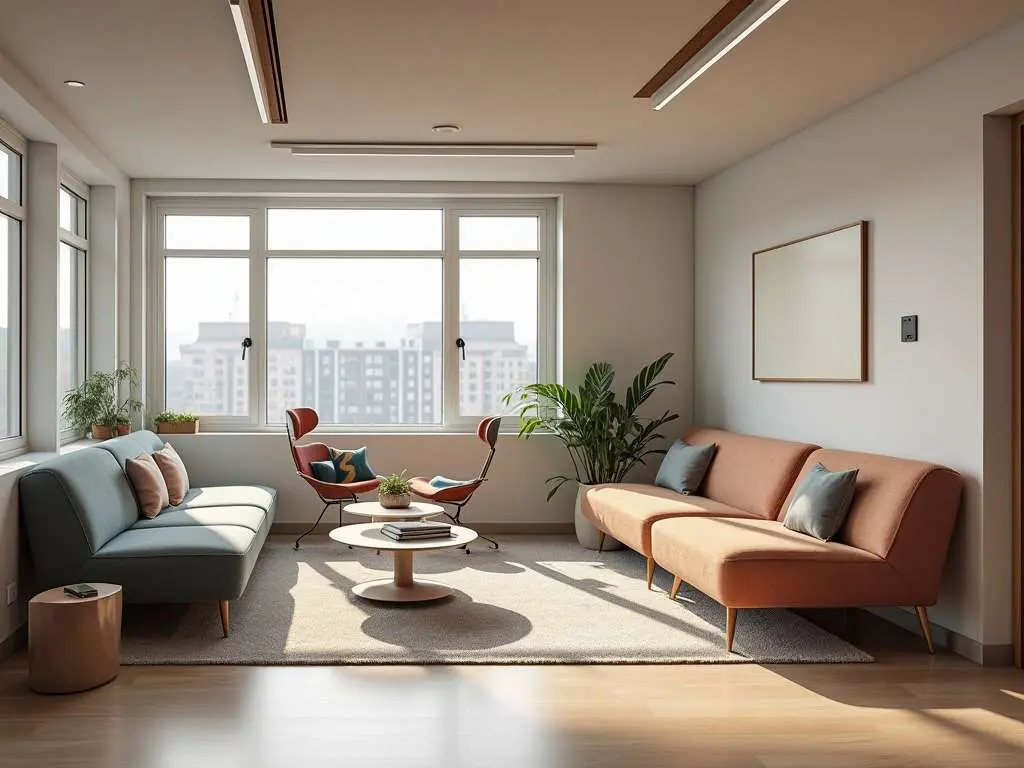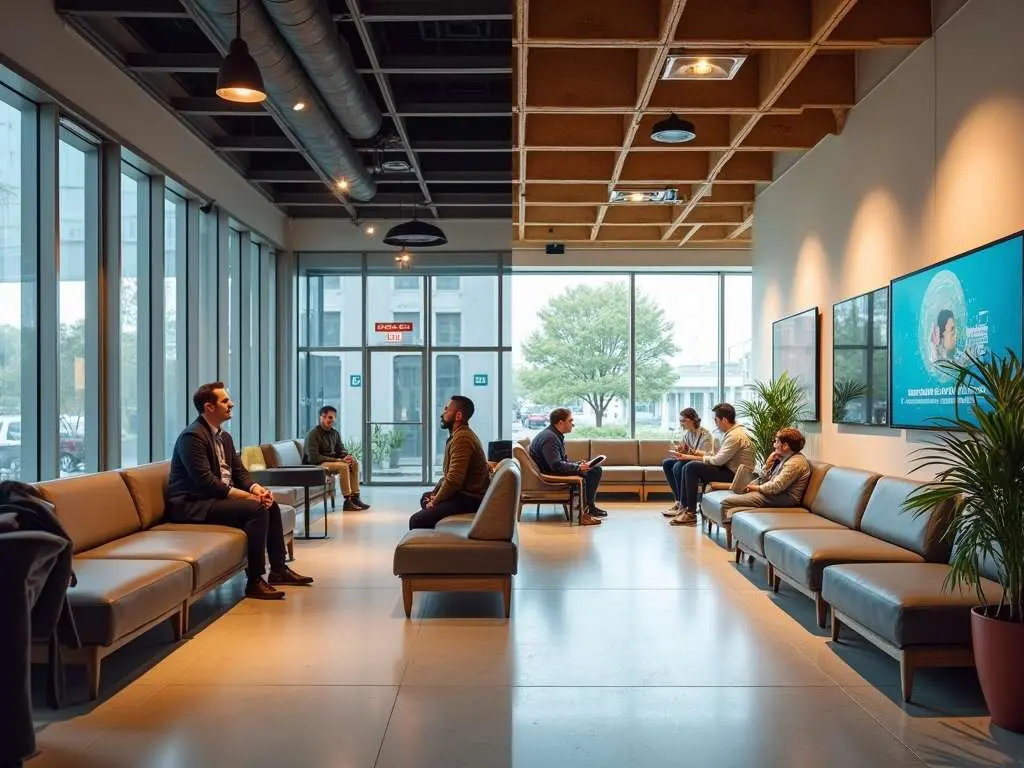As an interior architect focused on user experience, I’ve learned how short waiting times can become valuable opportunities for mental reset. At Curvspace, our philosophy is to craft wait areas that delight and recharge, rather than merely fill time. In this piece, we’ll reveal how strategic design choices—from seating comfort to aesthetic touches—can transform ordinary waiting into moments of relaxation and genuine. Learn to harness these micro-moments for improving well-being and elevating overall user satisfaction.
Jump to:
The Essence of Micro-Moments in Design
Micro-moments are those brief, often overlooked, instances where people interact with their environment in a way that can significantly influence their mood and behavior. In the context of waiting areas, these moments are critical. They’re the times when someone might glance at a piece of art, feel the comfort of a well-designed chair, or engage with an interactive display. Here’s how you can design for these moments:
1. Comfortable Seating:
- Choose ergonomic chairs that support the back and promote good posture.
- Consider a mix of seating options: single chairs, benches, and even standing desks for those who prefer not to sit.
2. Ambient Lighting:
- Natural light is ideal, but if not possible, use warm, indirect lighting to create a soothing atmosphere.
- Avoid harsh, fluorescent lights which can be fatiguing.
3. Greenery and Nature:
- Incorporate plants or even small water features to bring a sense of calm and connection to nature.
- Studies show that exposure to greenery can reduce stress and improve mood.
4. Interactive Displays:

- Use digital screens or interactive installations to engage visitors.
- These could be educational, entertaining, or even provide updates on wait times.
5. Privacy and Personal Space:
- Design the space to respect personal space. Use dividers or arrange seating to avoid overcrowding.
- Consider private nooks for those who prefer solitude.
Designing for Different Needs
Healthcare Settings:
- In hospitals or clinics, waiting areas should be designed to reduce anxiety.
- Use calming colors, provide educational materials about health, and ensure accessibility for all patients.
Corporate Environments:
- Here, the waiting area can reflect the company’s culture.
- Include charging stations, work-friendly tables, and perhaps even a small library or reading area.
Public Spaces:
- For airports or train stations, consider the transient nature of the crowd.
- Provide clear signage, real-time updates, and amenities like Wi-Fi and charging points.
Innovative Design Elements
Mural Walls:
- Murals can transform a space, making it visually stimulating and engaging.
- They can be themed to suit the demographic of the visitors, like animals for pediatric waiting areas.
NFC Technology and QR Codes:

- These technologies can offer personalized content or activities, turning waiting time into an interactive experience.
Art Installations:
- Art can serve as a distraction and a conversation starter, enhancing the waiting experience.
Practical Tips for Implementation

- Assess Your Space: Understand the flow of traffic, the average wait time, and the demographic of your visitors.
- Incorporate Feedback: Regularly gather feedback from users to refine and improve the design.
- Flexibility: Use modular furniture that can be rearranged to suit different needs or events.
People Also Ask
Q: How can I make a small waiting area feel more spacious?
A. Use mirrors to reflect light and space, choose furniture with a smaller footprint, and ensure there’s ample natural light2.
Q: What are some cost-effective ways to enhance a waiting area?
A. Simple additions like plants, comfortable cushions, and even a well-placed rug can significantly improve the ambiance without breaking the bank.
Q: How do I ensure my waiting area design is inclusive?
A. Consider accessibility in seating, provide clear signage, and ensure there are options for different physical needs, like wheelchair accessibility4.
Conclusion
Designing wait areas with micro-moments in mind isn’t just about aesthetics; it’s about creating an environment where people feel valued and cared for. By focusing on comfort, engagement, and well-being, you can turn waiting into an opportunity for relaxation and rejuvenation. Visit Curvspace for more insights on how to transform your waiting areas into spaces that truly recharge and delight.
References:
- Zivella Blog. “Waiting Areas Turn Into Comfort Zones.”
- Sharareh. “A Study of Private Hospital’s Waiting area.”
- Business.com. “How to Improve Customers’ Waiting Experience.”
- MySmartJourney. “What are the best waiting room ideas?”
- International Journal of Academic Research in Business and Social Sciences. “The Development of Art Design for Waiting Area of Pediatric.”
Disclosure
Our content is reader-supported. This means if you click on some of our links, then we may earn a commission. Commissions do not affect our editor’s opinions or evaluations. Learn more about our editorial process.

About the Editorial Staff
The Curvspace editorial team comprises a diverse group of experts on intermediate and threshold spaces in homes and workplaces. Architects and interior designers, civil engineers and artists, environmental and behavioral psychologists, sociologists and anthropologists. All collaborate to create helpful content, that explores the full potential of these often-overlooked areas to enhance our daily lives.


